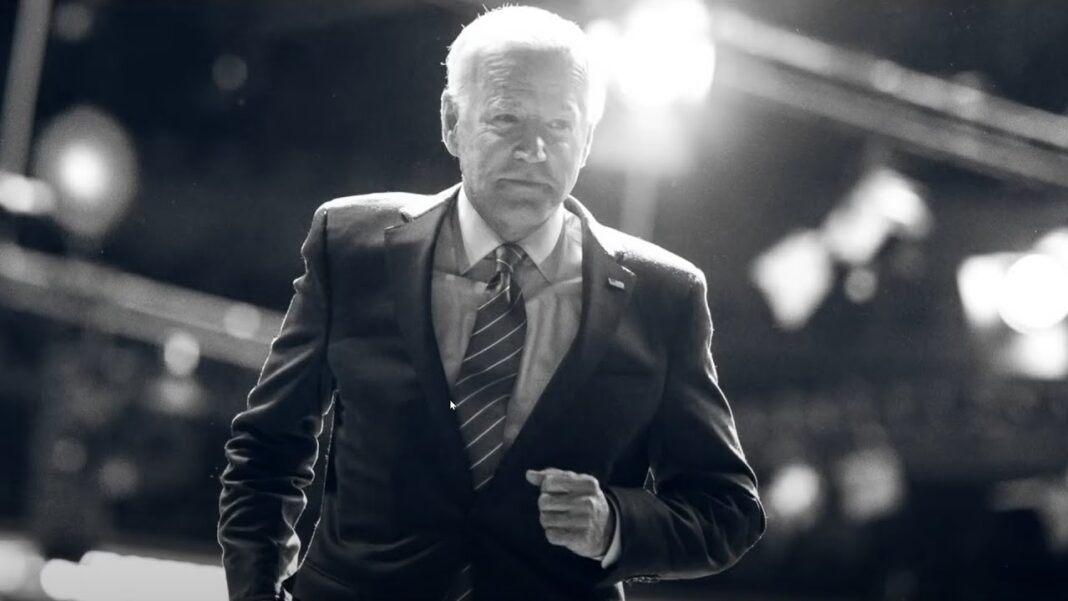New research shows that California’s climate policy created up to 39 million carbon credits that aren’t achieving real carbon savings. But companies can buy these forest offsets to justify polluting more anyway.
Along the coast of Northern California near the Oregon border, the cool, moist air off the Pacific sustains a strip of temperate rainforests. Soaring redwoods and Douglas firs dominate these thick, wet woodlands, creating a canopy hundreds of feet high.
But if you travel inland the mix of trees gradually shifts.
Beyond the crest of the Klamath Mountains, you descend into an evergreen medley of sugar pines, incense cedars and still more Douglas firs. As you continue into the Cascade Range, you pass through sparser forests dominated by Ponderosa pines. These tall, slender trees with prickly cones thrive in the hotter, drier conditions on the eastern side of the state.
All trees consume carbon dioxide, releasing the oxygen and storing the carbon in their trunks, branches and roots. Every ton of carbon sequestered in a living tree is a ton that isn’t contributing to climate change. And that thick coastal forest can easily store twice as much carbon per acre as the trees deeper inland.
This math is crucial to determining the success of California’s forest offset program, which seeks to reduce carbon emissions by preserving trees. The state established the program a decade ago as part of its efforts to combat climate change.
But ecology is messy. The boundaries between forest types are nebulous, and the actual amount of carbon on any given acre depends on local climate conditions, conservation efforts, logging history and more.
California’s top climate regulator, the Air Resources Board, glossed over much of this complexity in implementing the state’s program. The agency established fixed boundaries around giant regions, boiling down the carbon stored in a wide mix of tree species into simplified, regional averages.
That decision has generated tens of millions of carbon credits with dubious climate value, according to a new analysis by CarbonPlan, a San Francisco nonprofit that analyzes the scientific integrity of carbon removal efforts.
The offset program allows forest owners across the country to earn credits for taking care of their land in ways that store or absorb more carbon, such as reducing logging or thinning out smaller trees and brush to allow for increased overall growth. Each credit represents one metric ton of CO2. Landowners can sell the credits to major polluters in California, typically oil companies and other businesses that want to emit more carbon than otherwise allowed under state law. Each extra ton of carbon emitted by industry is balanced out by an extra ton stored in the forest, allowing net emissions to stay within a cap set by the state.
As of last fall, the program had produced some six dozen projects that had generated more than 130 million credits, worth $1.8 billion at recent prices.
While calculating the exact amount of carbon saved by preserving forests is complicated, California’s logic for awarding credits is relatively straightforward.
The Air Resources Board establishes the average amount of carbon per acre stored in a few forest types spanning large regions of the United States. If you own land that contains more carbon than the regional average, based on a survey of trees on your site, you can get credits for the difference. For example, if your land holds the equivalent of 100 tons of CO2 per acre, and the regional average is 40 tons, you can earn credits for saving 60 tons per acre. (This story will refer to each ton of CO2-equivalent as a ton of “carbon.”) You must also commit to maintaining your forest’s high carbon storage for the next 100 years.
These regional averages are meant to represent carbon levels in typical private forests. But the averages are determined from such large areas and such diverse forest types that they can differ dramatically from the carbon stored on lands selected for projects.
Project forests that significantly exceed these averages are frequently earning far more credits than the actual carbon benefits they deliver, CarbonPlan found.
This design also incentivizes the developers who initiate and lead these projects to specifically look for forest tracts where carbon levels stand out above these averages — either due to the site’s location within a region, its combination of tree species, or both.
CarbonPlan estimates the state’s program has generated between 20 million and 39 million credits that don’t achieve real climate benefits. They are, in effect, ghost credits that didn’t preserve additional carbon in forests but did allow polluters to emit far more CO2, equal to the annual emissions of 8.5 million cars at the high end.
Those ghost credits represent nearly one in three credits issued through California’s primary forest offset program, highlighting systemic flaws in the rules and suggesting widespread gaming of the market.
“Our work shows that California’s forest offsets program increases greenhouse gas emissions, despite being a large part of the state’s strategy for reducing climate pollution,” said Danny Cullenward, the policy director at CarbonPlan. “The program creates the false appearance of progress when in fact it makes the climate problem worse.”
The Air Resources Board defended the program and disputed the central thesis of the study.
“We disagree with your statement that landowners or project developers are gaming the system or that there are inflated estimates” of greenhouse gas reductions, Dave Clegern, a spokesperson for the Air Resources Board, said in an email. Each version of the offset rules “went through our robust public regulatory review process,” with input from the forestry industry, academia, government agencies and nonprofits, he added.
California’s forest offset program is the largest in the country that is government-regulated. Other forest offset programs are voluntary, allowing businesses or individuals to purchase credits to shrink their environmental footprint.
CarbonPlan’s study comes days after the Washington state legislature moved a cap-and-trade bill with an offset program to the governor’s desk for approval. Oregon has also debated in recent months establishing a carbon market program that would emulate California’s policy. In Washington, D.C., the Biden administration has signaled growing interest in harnessing forests and soil to draw down CO2. Businesses, too, increasingly plan to rely heavily on trees to offset their emissions in lieu of the harder task of cutting corporate pollution.
Forest offsets have been criticized for a variety of problems, including the risks that the carbon reductions will be short-lived, that carbon savings will be wiped out by increased logging elsewhere, and that the projects are preserving forests never in jeopardy of being chopped down, producing credits that don’t reflect real-world changes in carbon levels.
But CarbonPlan’s analysis highlights a different issue, one interlinked with these other problems. Even if everything else about a project were perfect, developers would still be able to undermine the program by exploiting regional averages.
Every time a polluter uses a credit that didn’t actually save a ton of carbon, the total amount of emissions goes up.
Far from addressing climate change, California’s forest offsets appear to be adding tens of millions of tons of CO2 into the atmosphere on balance, undermining progress on the state’s long-term emissions goals.
“When you strip away all the jargon, you’re left with a faulty set of assumptions that leave the door wide open to issuing meaningless offset credits,” said Grayson Badgley, a postdoctoral fellow at Black Rock Forest and Columbia University, and the lead researcher on the study.
Cherry-Picking
CarbonPlan provided ProPublica and MIT Technology Review full and exclusive access to their analysis as it was being finalized. As part of that process, the news organizations sent the report to independent experts for review. The organizations also interviewed landowners, industry players and scientists and reviewed hundreds of pages of documents, including the project plans submitted by developers. CarbonPlan collaborated on the study with academic experts from the University of California, Berkeley, Columbia University and other institutions.
The study itself wasn’t designed to assess whether developers or landowners are intentionally cherry-picking sites that stand out from regional averages, stating only that the system “allows for” developers to select such land. But the researchers themselves say that the level of excess crediting and the clustering of projects in certain areas suggest that industry players have gamed the system.
One form of cherry-picking identified by the researchers involves geographic boundaries. In the case of Northern California, the state’s offset program established a dividing line that separates that coastal strip of redwoods and Douglas firs from an inland region that spans more than 28,000 square miles.
The board’s rules state that tall mixed-conifer forests in the coastal region store an average of 205 tons of carbon per acre. For the neighboring inland region, the agency set the corresponding regional average at 122 tons per acre. The figure is lower because it includes more trees with less carbon, such as Ponderosa pines, which dominate the eastern end of the inland region and are all but absent on the coast.
But where the two regions meet, the forest on either side is virtually identical in many places, storing similar amounts of carbon. That means a project developer can earn far more money by choosing a site just east of the border, simply because they can compare the carbon in their forest against a lower regional average. For instance, maintaining a 10,000-acre forest of coastal redwoods and Douglas firs with carbon levels of 200 tons per acre could earn zero credits west of the line, or 624,000 credits east of it. The choice is between no money and more than $8 million.
To claim the most credits possible, for the full difference between the carbon on their land and the regional averages, developers or landowners must show that it’s legally and financially feasible to log down to those regional averages. The averages are effectively a stand-in for the way that similar forests are typically managed in an area.
A dozen projects are located in Northern California, almost entirely lined up along the western edge of the inland zone where the carbon-rich trees are juxtaposed against the lower regional average.
“What we’re seeing is developers are taking advantage of the fact that the big stuff and the scrubby stuff have been averaged together,” Badgley said.
Once an offset project developer and landowner decide to work together, the developer will generally shepherd them through the process in exchange for a fee or share of the sales of the credits generated — an arrangement that can be worth millions of dollars.
One of the most prolific project developers in the California system is an Australia-based timberlands investment company called New Forests. The company and its affiliates have worked on eight projects located almost entirely along the advantageous side of the border, as well as six elsewhere. CarbonPlan, in a separate analysis done for the news organizations that wasn’t included in the study, found that nearly all earned dubious credits, adding up to as much as $176 million worth.
How California’s Forest Carbon Offset Rules Allow Inflated Climate Benefits
One way the California Air Resources Board determines the number of credits for a project is by comparing the carbon stored in that forest against regional averages. The bigger the difference between the two, the more credits, and money, landowners can earn.
by Lisa Song, ProPublica, and James Temple, MIT Technology Review
Read Original Article on ProPublica.org
ProPublica is a nonprofit newsroom that investigates abuses of power.








